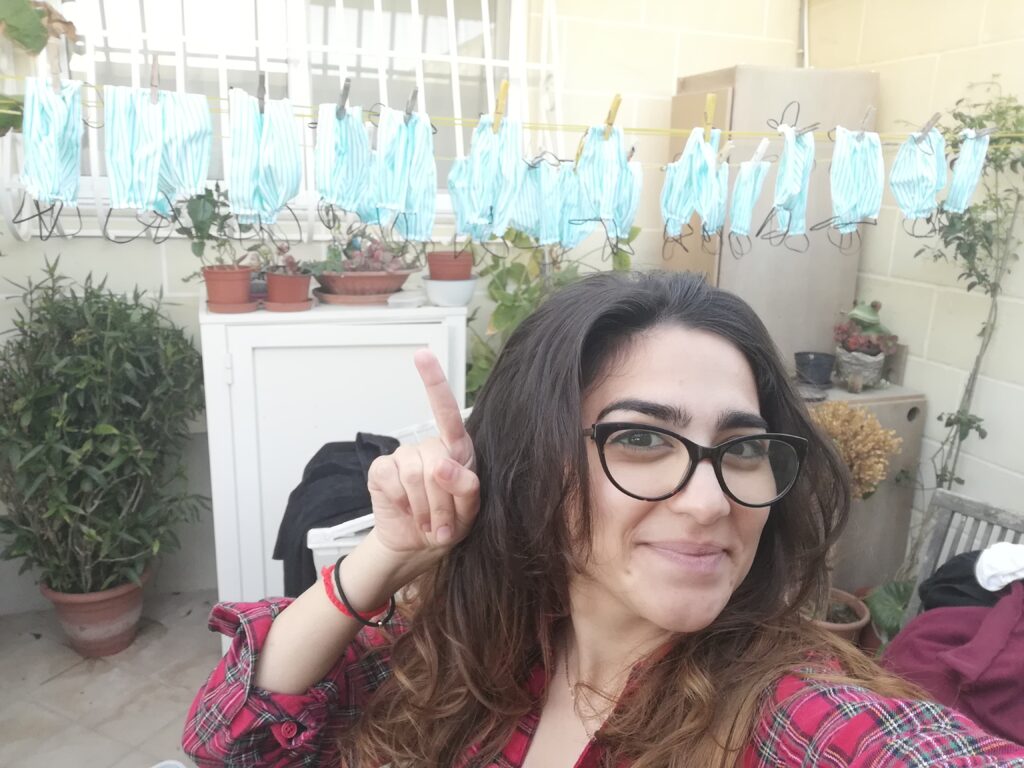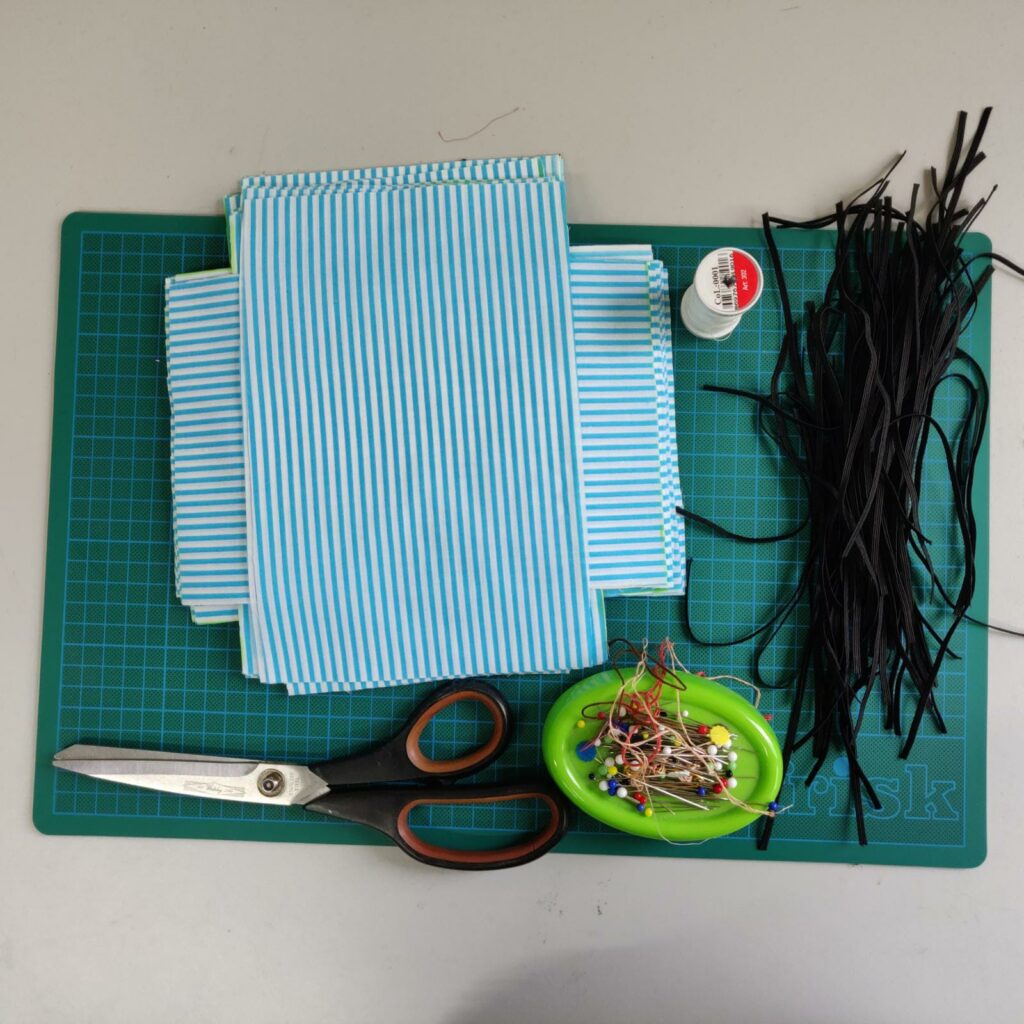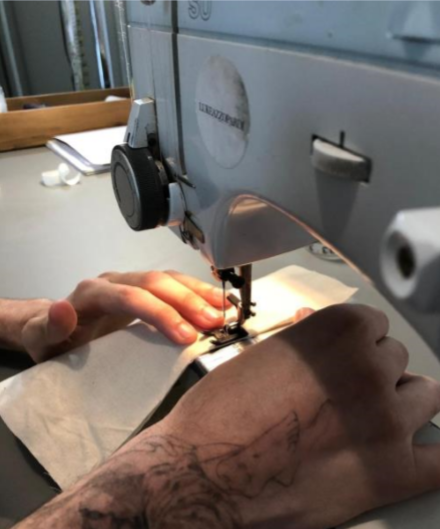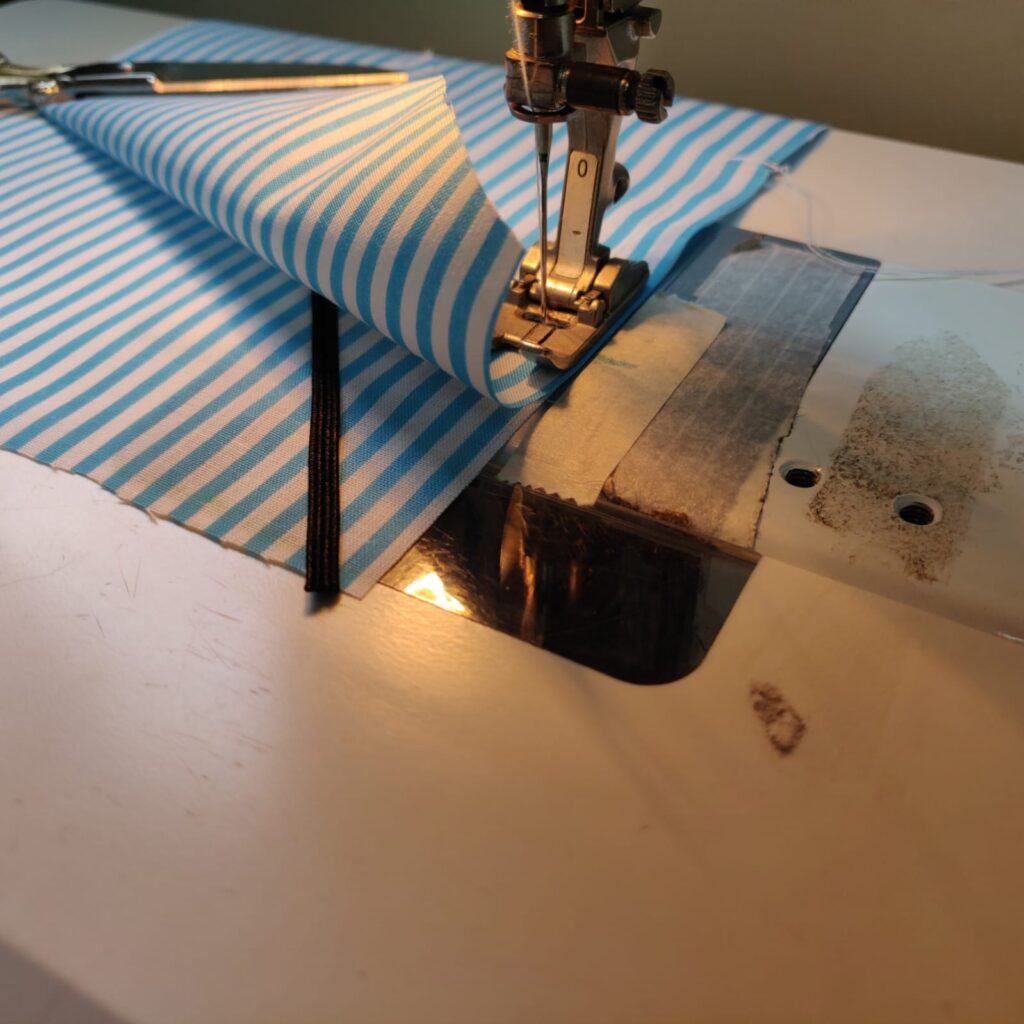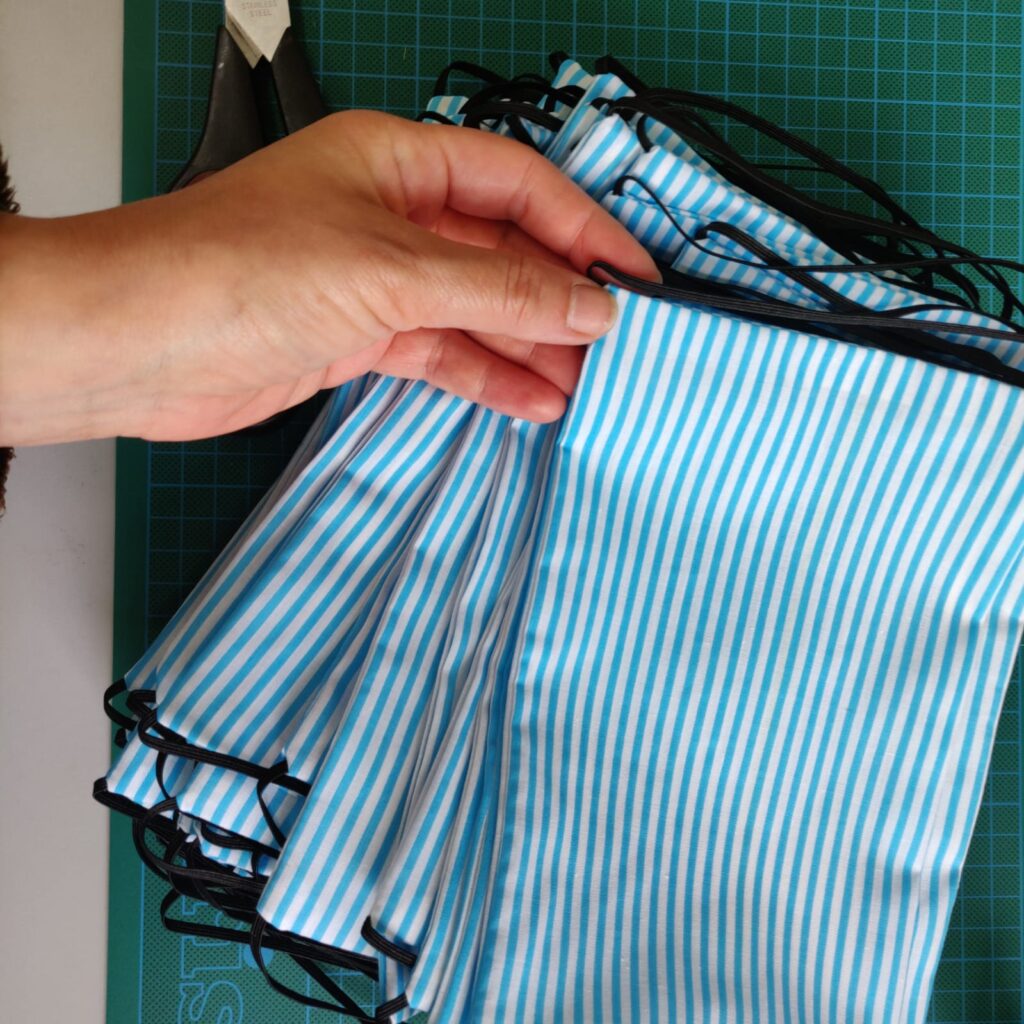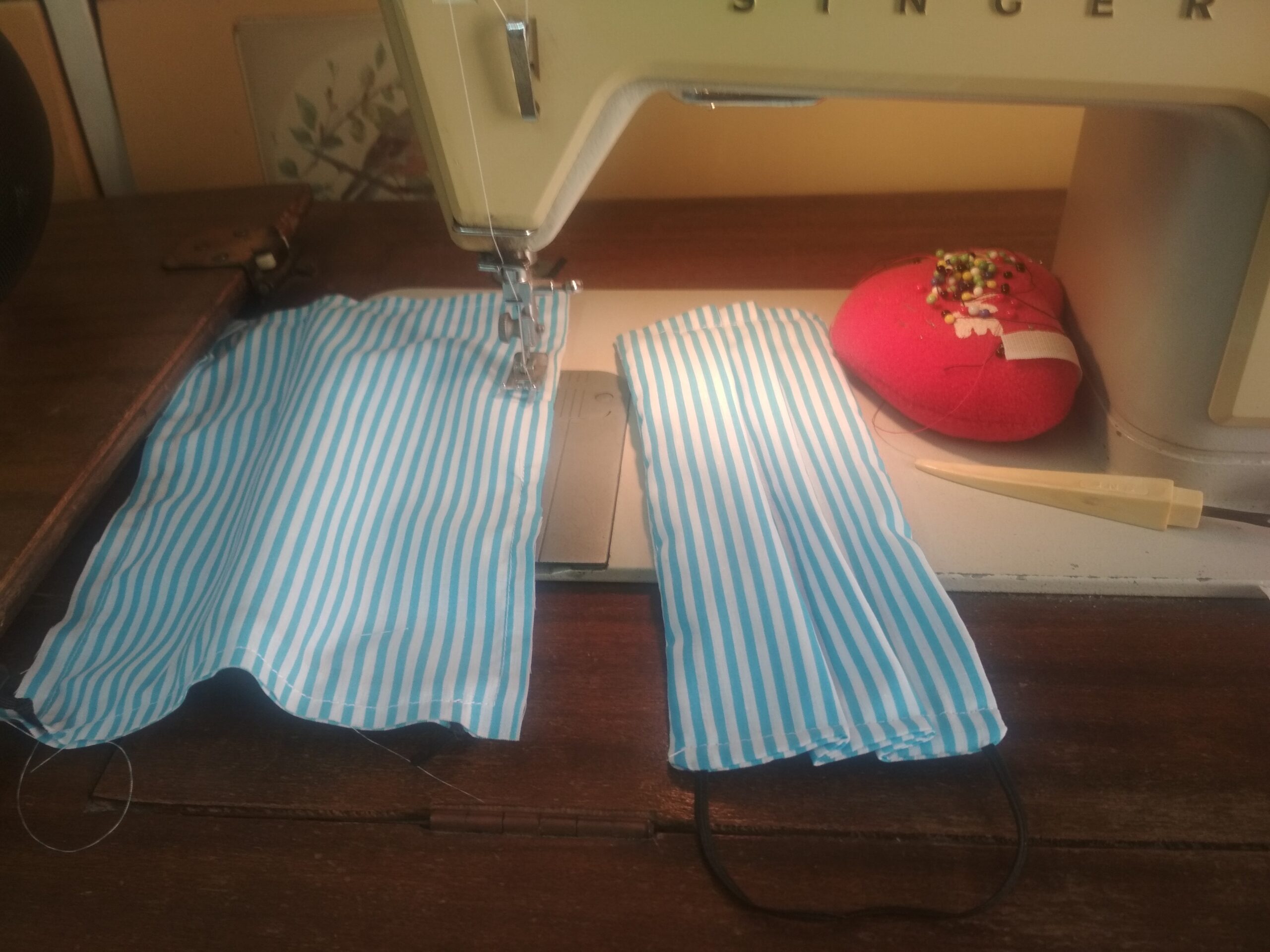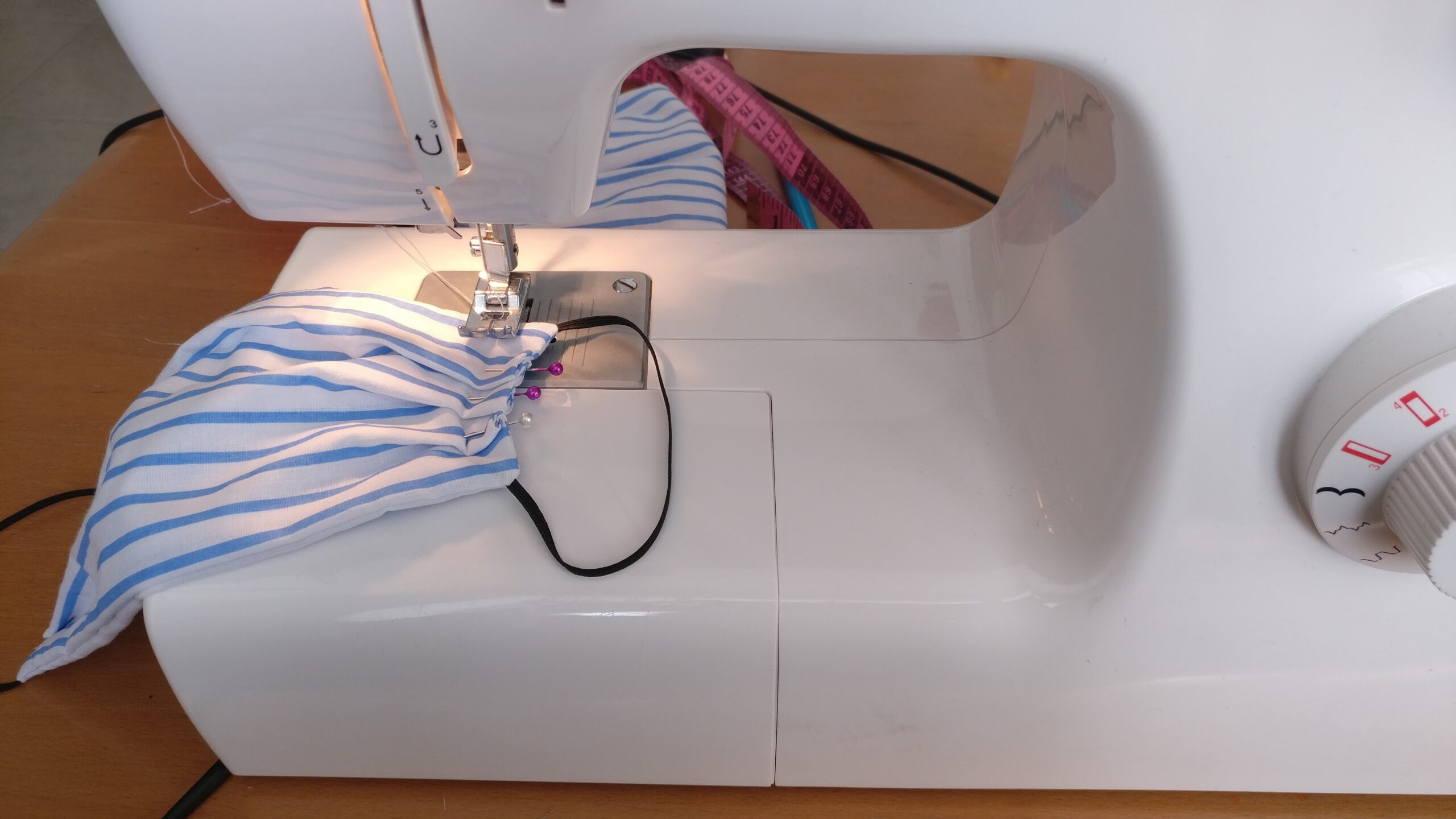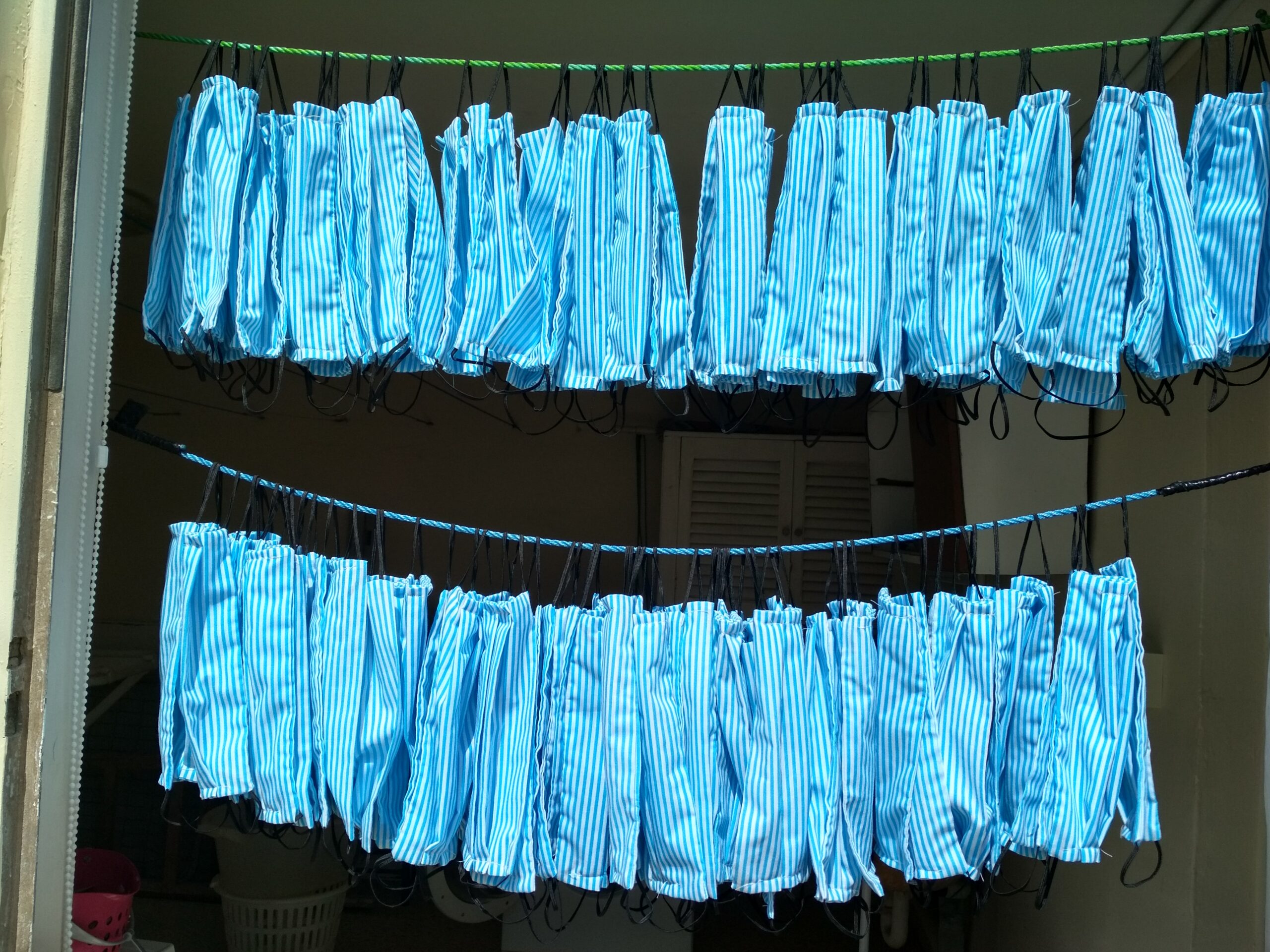Together with volunteers and tailors around the world MOAS has already made over 60,000 washable masks for vulnerable refugee and host communities. Now we are calling on you- our global family, to find a charity or organization near you servicing vulnerable communities, such as refugees, roofless, sheltered housing, non-medical essential workers etc, and make and donate masks to them with us.
We want to start a movement of solidarity and generosity. So make your masks and proudly tag us and the organization you’re donating to on socials @moas (FB) @moas_eu (TW/IG) AND #MOASMasks to join the global action now.
Below are the instructions, downloadable patterns and instructions and a step by step video tutorial so you can start your mask making journey.
What you’ll Need:
- Two 9 inch x 6 inch (23 cm x 15 cm) rectangles of fabric
- Two 18 cm lengths of rope elastic, 1/8” flat elastic or beading chord elastic (with beading chord elastic or rope elastic only tie a knot at each end of the strips)
- Ruler
- Sharp scissors
- Thread
- Pencil/chalk
- Sewing machine
- Pins
Masks should be made of a 100% cotton fabric with a tight weave. Ideal options are poplin or shirting fabrics. Fabric needs to be stiff, with no stretch, to keep the shape and facilitate pleating. If you’re making masks in bulk, we recommend getting a piece of fabric around 1.15m x 3.5m which will make up to 50 masks based on the measurements per mask listed above.
Instructions
1. Place the two sheets of fabric together with the pattern facing inward (inside out). Start sewing the fabric together at the center of one of the long edges and sew toward the corner, stopping just before the corner:
2. Once at the corner, sew one end of an elastic strap into the corner (just after the knots in case of beading chord or rope elastics) with the length of the elastic strip trailing diagonally in toward the middle of the mask between the 2 layers of fabric. Sew back and forward to secure the elastic:
3. Stitch on along the short end of the mask toward the next corner and secure the other end of the same elastic strip in place as above.
4. Sew along the other long edge toward the third corner, secure second elastic strip in place and repeat for final corner before sewing back toward the starting point, leaving a small 1.5”/2” (4cm/5cm) gap. Close off sewing and cut thread.
5. Turn the mask the right way out through the gap left in the mask. You should now have a neat, flat rectangle with the elastic on the outside secured in through the corners of the mask:
6. Pin 3 tucks into the mask by pinching and folding the fabric, ensuring all tucks are all in the same direction and sew around the mask edge twice to fix the pleats in place and reinforce the seams:
Well done! You’ve joined our volunteer army of mask makers. Simply wash and dry the masks to sanitize before donating to your local charity/orgaization.
YouTube MOAS Homemade Mask Tutorial:
Alternatively, you can follow this MOAS mask design tutorial by Maltese designer Luke Azzopardi who will guide you through each step of the process!
Once you have completed your masks, you should wash them on a 40-degree cycle and hang them in the sun to dry and sanitize (UV light helps the sanitization process, so sun-drying is preferred).
- Home-made masks are not a substitute for surgical or N-95 vent masks. They will, however, protect in part in the absence of other PPE and can be used by non-medical personnel to limit exposure.
- Masks should be machine washed on a high heat and sun dried or hand washed with soap and water or boiled in a pan of water to sterilize and sun dried.
- Masks should be put on with clean hands, secured in place so as to fully cover nose and mouth, and not touched or adjusted until removal.
- When removing mask, do so with clean hands, avoid touching rest of face, put directly into a wash and re-wash hands again.
- If adjustments are needed when wearing, wash hands, remove mask touching as little of the front fabric or face as possible, re-fit and wash hands again.
Tag us @moas (FB) @moas_eu (TW/IG) using #MOASMasks and #COVID-19
Download the instructions and patterns here:
1. Mask Instruction INTERNATIONAL MOAS – Mask cleaning instructions EN
2. MOAS – Mask cleaning instructions EN

